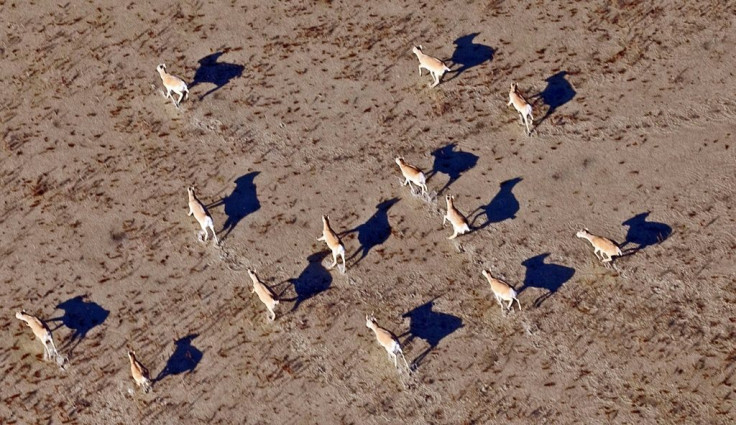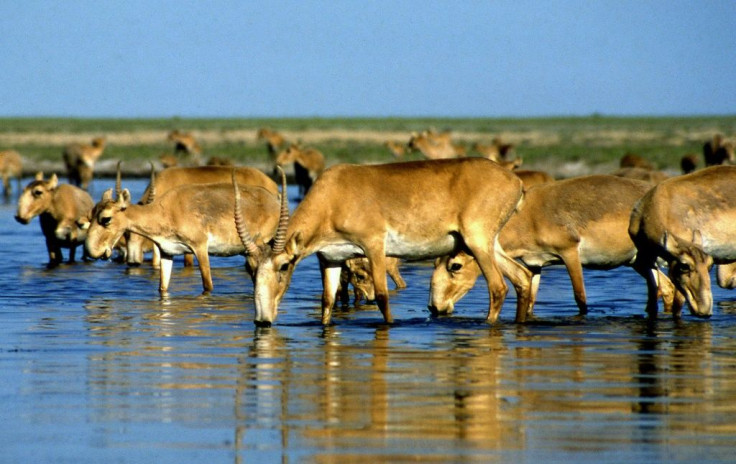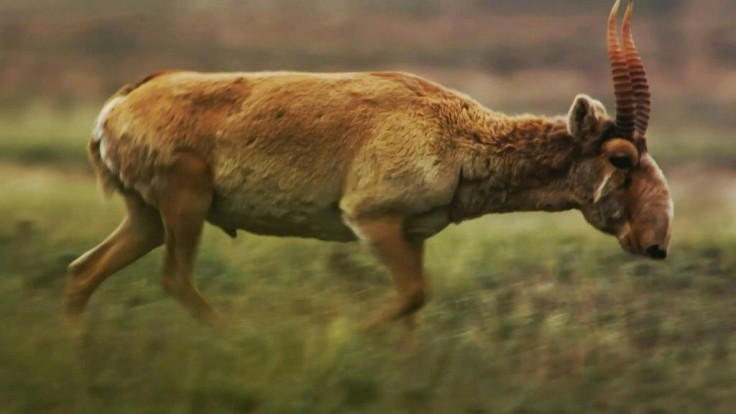Kazakhstan Sees Rare Antelope Rebound After Mass Die Off
The population of the critically endangered Saiga antelope has more than doubled since 2019, Kazakhstan said Friday, giving conservationists fresh hope for the steppe-dwelling animal's long-term survival.
News that the Central Asian country's Saiga population rose from 334,000 to 842,000 since the last time an aerial survey was carried out suggests it is continuing to rebound after a massive die-off in 2015.
Kazakhstan's ecology ministry said in a statement the boom was "an indicator of the effectiveness of measures to conserve saiga populations and counteract poaching".

The former Soviet country's vast steppe is home to a majority of the world's Saiga with Russia's Kalmykia region and Mongolia hosting smaller numbers.
In 2015, around 200,000 of the antelopes -- well over half the total global population at the time -- were wiped out by what scientists later determined was a nasal bacterium that spread in unusually warm and humid conditions.
The International Union for Conservation of Nature (IUCN), whose "Red List" is the scientific reference for threatened wildlife, deems the Saiga to be among five critically endangered antelope species.
Kazakhstan did not complete an aerial survey in 2020 due to the coronavirus.

Poaching is a persistent threat to the Saiga, known for its distinctive bulbous nose, and is fuelled by demand for their horn in traditional Chinese medicine.
Kazakhstan's leaders pledged to intensify their crackdown on poaching after two state rangers were killed by poachers in 2019.

The murders triggered a national outcry.
One of the pair, Yerlan Nurgaliyev, is honoured with a mural on an apartment building in the largest city Almaty, which depicts him cradling one of the animals that are seen as national symbols.
But recent police busts point to the scale of the threat facing the species.
In April, the interior ministry said it had detained two men responsible for poaching more than 800 saiga horns, which the ministry said were worth millions of dollars.
The detainees had "cut off the horns of the dead Saigas and stored them for sale" since autumn of last year, the release said.
Albert Salemgareev, an expert with the Kazakhstan-based Altyn Dala Conservation Initiative that works closely with the government and international partners to preserve Saiga, said the project's visits to the region had showed a "positive dynamic".
"Not only are the numbers of Saiga increasing, but the number of males relative to the number of females is also growing," said Salemgareev, whose group drove and hiked between saiga populations this month, weighing and marking newborns.
If five years ago demand for the male horn had brought the male to female ratio as low as one to 18, recent visits to one Saiga region in the northwest of Kazakhstan suggested a ratio closer to "one to seven, or one to eight", Salemgareev estimated.
Climate change and the expansion of human activity through farming and infrastructure projects are other threats to the Saiga.
Earlier this month the ecological ministry estimated that around 350 female saiga antelopes had been killed by lightning amid storms in the west of the country.
© Copyright AFP 2024. All rights reserved.





















